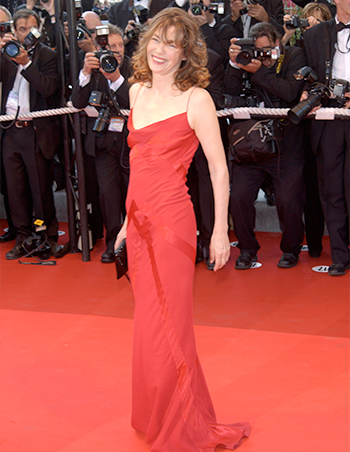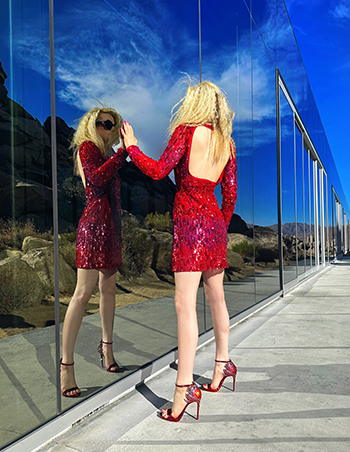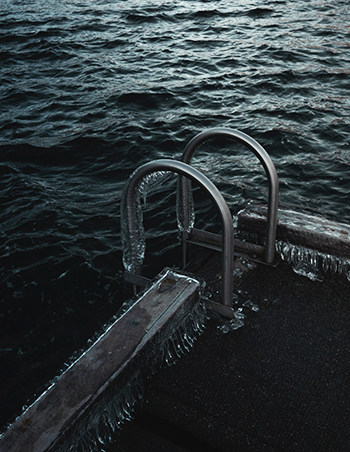
Where Cool Meets Wellness: Dive into Cold-Plunge Therapy for Ultimate Inflammation Relief.
Date: 09/15/2023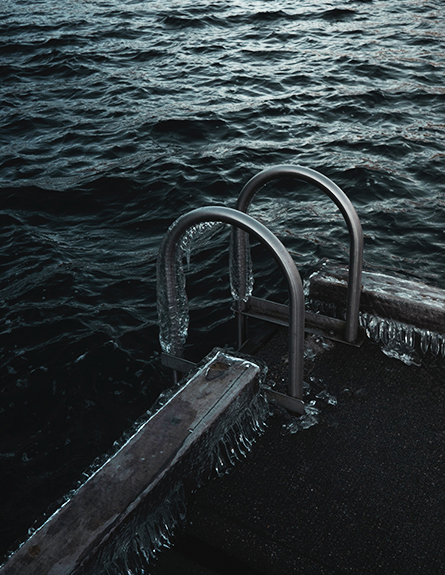
It’s true: a simple cold shower can build resilience to stress and even reduce inflammation. Read on to find out how!
You may have heard the saying, if we don’t choose to make room for our wellness now, we’ll be forced to make room for our illness later. To me, this statement reflects the very real transition I’ve undergone In dealing with my own chronic illness, whereby I’ve moved away from a more Westernized approach to medicine – which is geared to responding to illness once it has already occurred – toward a more preventative method that targets illness triggers before they occur.
Of course, having chronic Lyme disease as I do, it is often not possible to reach a place where my illness is completely resolved. Nevertheless, I am taking big steps toward improving my general quality of life through multiple low-intensity bio-hacking methods, including cold-plunge therapy; particularly, the practices that surround the methods cultivated by Wim Hof.
Yet it occurred to me recently: when we talk about biohacking on a day-to-day basis, we often forget that the smallest adjustments to our daily routines can have a big impact on our biology. We don’t have to go anywhere for specialized treatment – though that can help for some – which means we don’t have to go above and beyond or invest a ton of money to start deepening our health and wellbeing through the use of cold-plunge (or contrast) therapy.
But what is cold-plunge therapy? And who the heck is Wim Hof?
Most importantly, is there any proof cold-plunges can actually benefit our health?
From what I’m about to share, the answer is yes!
That’s why today I want to outline some of the information I’ve been exposed to on my own research journey when it comes to cold-plunge therapy, much of which has been supported by clinicians, doctors, naturopaths, and other biohacking researchers prominent in the field.
But let’s start simple, by defining cold-plunge therapy and considering it’s history, while also learning a little bit about the man who popularized the practice for us in the 21st century, Wim Hof!
What is Cold-Plunge Therapy, or Contrast Therapy?
At its core, cold-plunge therapy (or contrast therapy) is the practice of drastically reducing one’s temperature through cold-water immersion, or continued contact with a cold surface such as ice. It is a non-pharmacologic approach to creating documented health benefits such as muscle recovery, reduced inflammation, and even stress relief, and it has a long history in general medical practice to back up these effects!
For instance, around 2500 BCE the Egyptian peoples were known to use cold to treat injuries, while icy temperatures were used to facilitate amputations in Napoleon’s time. Flash forward to the mid-1800s and English doctors are documented using cold applications to treat headaches and other neural defects, while one doctor (Arnott) used freezing to shrink skin, breast, and cervical cancers, even revitalizing the practice of using cold as an anesthetic before surgery.
Soon, cooling gasses arrived on the scene to birth the medically-intensive practice of cryotherapy. Cryotherapy is the use of extremely cold (or freezing) substances to destroy abnormal tissue. It’s a non-invasive therapy that we have used since the turn of the 20th century to treat warts and other dermatological conditions like skin tags and dark spots. This book even explores how cryotherapy impacts neurological and musculoskeletal conditions through pain relief effects, decreased hemorrhage, and by aiding in neurological rehabilitation after an injury.
To clarify, there seem to be two main branches of cold-exposure therapy: cryotherapy, and cold-water immersion therapy. The main difference between these is that the former adopts medically-induced freezing as an acute treatment practice, whereas the latter uses simple cold exposure at less extreme temperatures to spur small-scale physiological changes over the long-term.
That being said, cold-plunges have more commonly been observed to impact our metabolic, cardiovascular, and autonomous nervous systems without necessitating exposure to over-extreme cold conditions. Some studies even show that non-freezing therapies have similar functional effects to cryotherapy on muscle recovery and inflammation.
Still, many are quick to acknowledge how much more study is needed in this area due to a variety of sample biases in these studies since, as one article from Cedars-Sinai puts it, “the popularity of cold-water exposure has outpaced research into the subject.” As a result there is a ton of misconception around what it is that cold-plunge therapy actually does, and how we can safely incorporate it into our health regimens for maximum benefit. So, although there has been a ton of incredible scientific research inspired by the theories and practices curated by Wim Hof, he is somewhat to blame for the explosion in popularity when it comes to cold-exposure therapies. Thankfully, he is also the one who is doing all the work to explore and expand on the existing science that surrounds the physiological benefits of various cold-plunge methods so that we don’t stray too far from fact.
Before we dig deeper into what he and other researchers have found, then, I think it best to give a little testament to Wim Hof, in thanks for his wisdom!
The Science of Wim Hof
Fun Fact: Of the 26 world records Wim Hof has set, the most impressive may well be longest swim under ice, and longest time submerged underwater while in full-body contact with ice (at just under two hours). Plus, he has climbed the summit of Mount Everest…in only shoes and a pair of shorts!
Following the tragic passing of his wife, Wim Hof gained an immensity of focus on getting himself out of the pain that the event caused. After years of pushing the limits of his body and his mind, Wim Hof had the answer he had been seeking, and it involved a three-fold combination of cold exposure, breathing techniques, and deep mindfulness to reduce and even negate pain stimuli. What was remarkable about Wim Hof’s case, however, was that scientists and researchers were able to back up his claims with physical proof that Wim Hof could activate his own autonomic nervous system.
Being automatic, this system was always thought by biologists to be involuntary, yet here was undeniable proof that it can be controlled. Remember, this is the system that controls everything from our sweat to our blood pressure, to our breathing. If it’s possible we can regulate those functions through conscious practice, then it’s possible that we can combat other immune-based responses as well!
The evidence that cold-plunge therapy works
If you’re active online, you likely heard about cryotherapy and cold-plunges from a sports personality or fitness advocate. That is because, of all the studied benefits listed for cold exposure, the positive effects on sore muscles is the most documented. As Dr. Tracy Zaslow – primary care sports medicine physician at Cedar-Sinai – says:
“There have been a couple of studies showing that there may be some decreased soreness after people were immersed in cold water for about 10 minutes versus those who did not do any cold therapy…When you’re in cold water, your blood vessels constrict so there’s less blood flow to the area, then there’s less swelling and inflammation leading to less pain.”
Indeed, this study shows that oscillating between hot and cold water immersion (i.e., contrast therapy) may be effective at reducing delayed onset muscle soreness when compared to passive recovery. Yet the simplified effects of cold exposure have since been extended to include a positive effect on the inflammatory profile of healthy people, particularly those with spinal cord injuries (SCIs). Indeed, in a participant population of those with an SCI, the combined Wim Hof method showed positive improvements on energy levels, respiratory function, and mental health, while other similar studies focus on the pain reduction effects of combined cold exposure and breathing techniques.
What seems to be happening in the body, then, is that the signals of physical stress caused by respiratory hyperventilation (the rapid breathing and holding of breath) as well as prolonged exposure to cold are triggered. When these stimuli are later reduced, the result is a higher threshold for stress tolerance, both at the physical and psychological level–which is largely why Wim Hof practitioners attest to increased mental health and relief from stress.
Yet there is biological evidence for where the reduction of stress hormones comes from, such as this article, which shows that noradrenaline and dopamine concentrations were respectively 530 and 250% higher during cold-water immersion, resulting in a decrease in cortisol production overall. Altogether, the findings suggest that our bodies’ response to cold increases the activity of our sympathetic nervous system with paradoxically positive results.
There is also proof that cold-water immersion has effects on our metabolic system, our heart rate, and our blood pressure. For instance, this study showed that being in cold water at 58 degrees (F) increased our metabolic rate by 350%, our heart rate by 5%, and our blood pressure by 7 to 8%. At the same time, while acknowledging a small study bias and the need for more research, this study is not the only one to note that cold-water plunges can reduce insulin resistance and improve insulin sensitivity. These are exactly the kinds of impacts that can help protect against obesity or cardiovascular disease!
Knowing then, as these studies show, that cold-water exposure or prolonged cold exposure does produce positive biological effects in our bodies, let’s look at the other correlated benefits that researchers are exploring when it comes to cold plunges, and even cryotherapy!
What is the Wim Hof technique?
Although we are talking mostly about cold-plunge therapy in this article, the Wim Hof Method (WHM) incorporates the three main pillars listed above as core to the entire practice. For example, research has shown that stress is reduced most when breathing and cold therapy are combined, as opposed to being used individually.
But what does the WHM look like in real-time?
First the breathing techniques, which start with a set amount of deep inhalations and exhalations to allow the voluntary process of breathing to draw air back out, as opposed to forcefully pressing the air out. Once these deep inhalations have been completed, breathing is held for 60, 90, or 120 seconds (or more), exhaling again and drawing breath in for 15 seconds prior to release.
As I’ll share in the next section, Wim Hof understands that being exposed to cold during this breathing practice increases the positive effects of this type of regulation. To partake in this simple activity, practitioners take a cold shower, or intermittently expose themselves to cold water during (or at the end of) their regular shower. Hard-core practitioners will even plunge in icy temperatures for a more deliberate effect.
Whether a person decides to find the nearest river, take a cold shower or ice bath, or simply put their hand in a bowl of ice, the exposure to cold temperatures of anywhere from 58 to 32 degrees Fahrenheit (or less) stimulates biological responses that have been related to reductions in inflammation, hormone homeostasis, higher endorphin levels, and the regulation of brown fat production–a fact that’s been proven in the various studies I’ll outline in the next section.
Finally, to top off the Wim Hof Method, a person should remain deeply committed to the practice, for it is this commitment which ties the breathing and cold-plunge therapies together for the best and most observable results. But what are those results, and how does it all work?
The evidence that cold-plunge therapy works
If you’re active online, you likely heard about cryotherapy and cold-plunges from a sports personality or fitness advocate. That is because, of all the studied benefits listed for cold exposure, the positive effects on sore muscles is the most documented. As Dr. Tracy Zaslow – primary care sports medicine physician at Cedar-Sinai – says:
“There have been a couple of studies showing that there may be some decreased soreness after people were immersed in cold water for about 10 minutes versus those who did not do any cold therapy…When you’re in cold water, your blood vessels constrict so there’s less blood flow to the area, then there’s less swelling and inflammation leading to less pain.”
Indeed, this study shows that oscillating between hot and cold water immersion (i.e., contrast therapy) may be effective at reducing delayed onset muscle soreness when compared to passive recovery. Yet the simplified effects of cold exposure have since been extended to include a positive effect on the inflammatory profile of healthy people, particularly those with spinal cord injuries (SCIs). Indeed, in a participant population of those with an SCI, the combined Wim Hof method showed positive improvements on energy levels, respiratory function, and mental health, while other similar studies focus on the pain reduction effects of combined cold exposure and breathing techniques.
What seems to be happening in the body, then, is that the signals of physical stress caused by respiratory hyperventilation (the rapid breathing and holding of breath) as well as prolonged exposure to cold are triggered. When these stimuli are later reduced, the result is a higher threshold for stress tolerance, both at the physical and psychological level–which is largely why Wim Hof practitioners attest to increased mental health and relief from stress.
Yet there is biological evidence for where the reduction of stress hormones comes from, such as this article, which shows that noradrenaline and dopamine concentrations were respectively 530 and 250% higher during cold-water immersion, resulting in a decrease in cortisol production overall. Altogether, the findings suggest that our bodies’ response to cold increases the activity of our sympathetic nervous system with paradoxically positive results.
There is also proof that cold-water immersion has effects on our metabolic system, our heart rate, and our blood pressure. For instance, this study showed that being in cold water at 58 degrees (F) increased our metabolic rate by 350%, our heart rate by 5%, and our blood pressure by 7 to 8%. At the same time, while acknowledging a small study bias and the need for more research, this study is not the only one to note that cold-water plunges can reduce insulin resistance and improve insulin sensitivity. These are exactly the kinds of impacts that can help protect against obesity or cardiovascular disease!
Knowing then, as these studies show, that cold-water exposure or prolonged cold exposure does produce positive biological effects in our bodies, let’s look at the other correlated benefits that researchers are exploring when it comes to cold plunges, and even cryotherapy!
Five Direct Health Benefits of Cold-Plunge Therapy and Cold Exposure
Now that we’ve explored a little bit of the science behind what cold-plunge therapies like cold-water immersion can do, let’s take a closer look at the main effects that cold-plunge (and breathing) practices can have on our bodies and everyday quality of life:
- Helps us burn fat. Humans have white fat and brown fat. While white fat stores energy, brown fat uses energy by burning the calories we consume. What’s interesting is that cold exposure therapies increase brown fat activity, whereas a lack of this fat activity is linked with obesity.
- Strengthens the immune system. After six weeks of cold-water immersion, an analysis revealed that participants in one study had a more active immune system than they did at baseline.
- Helps us detox. People who regularly swim in ice water were seen in one study to have higher levels than normal of an antioxidant that is vital to help us detox naturally.
- Alleviate headaches. Not only does cold compression provide increased pain relief when compared to alternative compression methods, when used on its own, cold application has been shown to improve the symptoms of even the nastiest migraines.
- Increased will power. While this finding is based on participant response and can’t be measured statistically, many study participants report increases in motivation and will to be active.
Disclaimer: I do not recommend rapidly immersing yourself into cold water, as you may suffer from a cold shock response from the induced breathing and heart rate changes. In fact, let’s take a quick look at the risks of this therapy to make sure we’re practicing cold-water immersion safely and in a controlled environment. Remember, we have to work our way up to being as incredible as Wim Hof–who says that anyone can learn to do what he does.
Are there any risks with cold-plunge therapy?
The short answer is yes, but as with anything, moderation and safe usage can mitigate most of the risks that have been listed–not that there were many when I went looking.
For example, the biggest risks are that you change your temperature too rapidly, or are exposed to the cold for too long, which can cause anything from frostbite to hypothermia and in serious cases, heart attacks.
To work around these risks, most researchers and physicians suggest building up your tolerance slowly, over time, and making sure you are warming up properly afterward. You could for instance go for a short walk in the cold, and then move on to short, cold showers until you’re ready for a cold plunge or ice bath.
Practicing Cold-Plunge Therapy at Home
So, what do you think?
Does it sound like cold-plunge and cold-water immersion therapies are for you? Truly, I think they are an easy, simple way to stay conscious about our bodies, and though there are tons of proven benefits, the main benefit is that these cold exposures literally ‘wake us up’, bringing us back to life and ready for the day. And although most researchers agree that more conclusive research is needed in this field, there is really no harm in adopting this small-scale method into your daily wellbeing routine.
Based on everything I found then, you should have no issue applying this practice at home, on your own time, or at your own pace–and you don’t have to buy any fancy equipment to do so. In fact, this study showed that a good old bag of frozen peas in the hands or under the knees is enough to cool your skin for those great physiological effects–just don’t go longer than ten or 15 minutes, switching back and forth if you start to feel discomfort.
With that, I hope you’re as inspired as I have been to explore this natural, non-invasive form of therapy. Even though it can be shocking at first, and you’ll want to get out of the cold, the longer you withstand, breathe, and be mindful of what’s going on in your body, you’ll benefit.
Otherwise, I promise to share my results and more information and facts through my Instagram as I go, and can’t wait to hear your biohacking stories and experiences when it comes to cold-plunges and cold water immersion. Until next time!
Until next time then,
All my love,

Lena
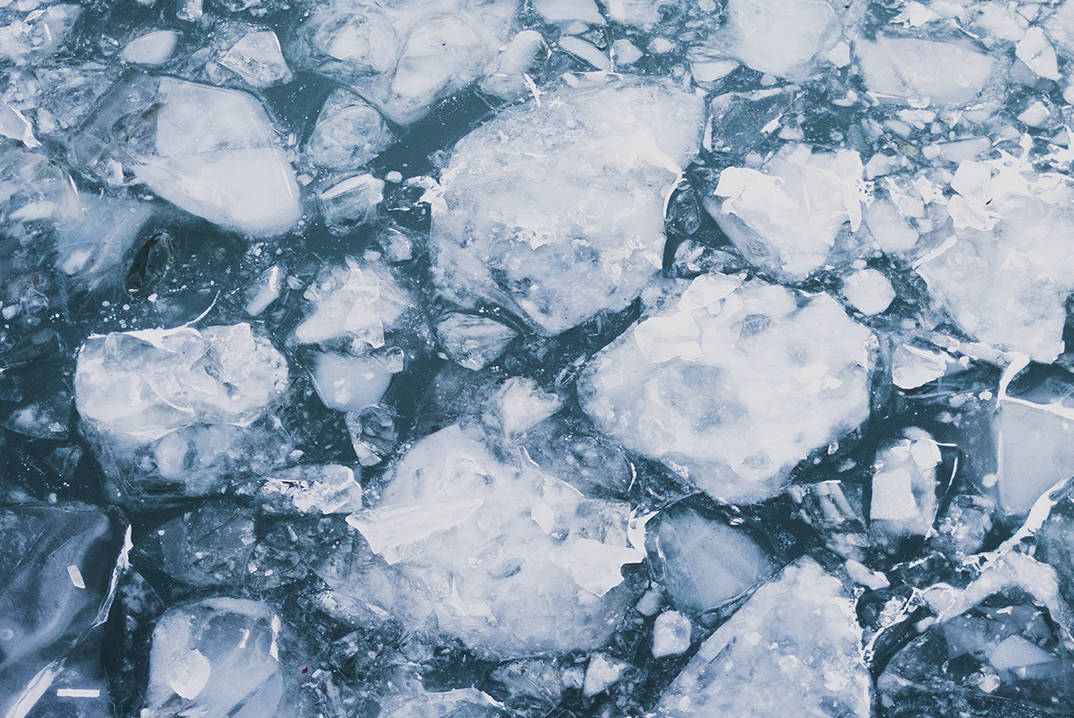
SUBSCRIBE
Get the latest updates, sneak peeks and more.
 Back To All Posts
Back To All Posts Previous Post
Previous Post